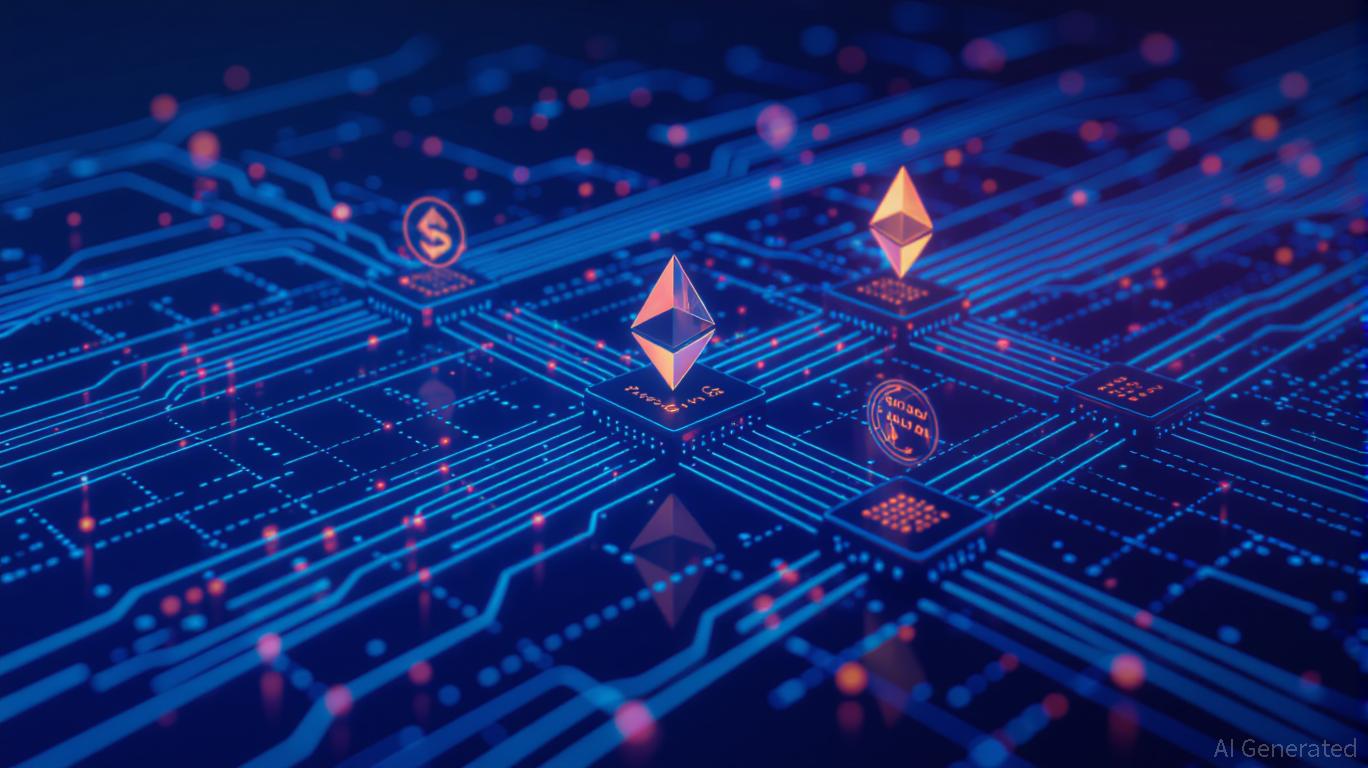The Emergence of Fogo's High-Speed SVM Chain and Its Implications for Blockchain-Driven Financial Infrastructure
In an era where traditional financial systems are increasingly challenged by the demand for real-time, decentralized solutions, the rise of high-performance blockchain infrastructure marks a pivotal shift. Fogo, a Layer 1 chain built on the
Virtual Machine (SVM), has emerged as a formidable contender in this landscape, offering a blueprint for institutional-grade on-chain finance. Its strategic innovations—combining ultra-low latency, hybrid virtual machine architecture, and curated consensus mechanisms—position it as a critical player in the post-traditional finance era. For investors, understanding the interplay between technical execution and market dynamics is key to assessing its long-term potential.The Technical Foundation: Bridging the Gap Between Speed and Security
Fogo's architecture is engineered to rival centralized systems like NASDAQ in throughput and latency while maintaining blockchain's decentralization. At its core, the chain leverages Firedancer, a C-written validator client optimized for parallel processing, enabling block times of 40 milliseconds and 54,000 transactions per second (TPS) in testnet environments. This performance is further amplified by a hybrid SVM+EVM model, which natively supports both Solana and Ethereum-based smart contracts, eliminating the need for intermediaries like Neon for EVM compatibility.
A unique feature is Fogo's multi-local consensus model, inspired by traditional finance's “follow the sun” trading framework. Validators dynamically co-locate in regions with high trading activity, minimizing latency while retaining fallback to global consensus for redundancy. This design reduces the risk of harmful MEV (Maximal Extractable Value) behavior and ensures consistent throughput. Additionally, a curated validator set of 19–30 nodes, initially governed by a genesis authority, balances performance with decentralization. Validators are incentivized to optimize execution, with slashing mechanisms penalizing underperformance or malicious activity.

Market Positioning: A Platform for Institutional Adoption
Fogo's technical prowess is complemented by its strategic alignment with institutional needs. The chain's compatibility with Solana's ecosystem allows seamless migration of existing projects, reducing friction for developers and enterprises. Its integration with Ambient Finance—a decentralized exchange (DEX) protocol—further solidifies its utility for on-chain trading, liquidity provision, and derivatives.
The project has also secured robust institutional backing, including an $8 million funding round led by The Echonomist in January 2025, with participation from entities like 4 CMS Holdings and Big Brain Collective. This capitalization, coupled with a seed round of $5.5 million, underscores confidence in Fogo's ability to scale. The team, composed of former traditional finance quantitative analysts and Solana developers, brings a rare blend of expertise to address both technical and regulatory challenges.
Investment Potential: Navigating Risks and Opportunities
Layer 1 innovations like Fogo present a dual opportunity: they address blockchain's scalability limitations while opening new avenues for decentralized finance (DeFi), real-time applications, and institutional-grade infrastructure. However, investors must weigh several factors:
- Technical Execution: Fogo's devnet and testnet results (54,000 TPS, 40ms block times) are promising, but mainnet performance will be critical. Delays or bottlenecks in scaling could erode confidence.
- Market Competition: While Fogo's hybrid SVM+EVM model is unique, rivals like Solana and are also enhancing their throughput. Fogo's ability to differentiate itself through institutional partnerships and use cases will determine its longevity.
- Regulatory Climate: As on-chain finance gains traction, regulatory scrutiny may intensify. Fogo's curated validator model and institutional focus could mitigate risks, but adaptability to evolving frameworks will be essential.
For conservative investors, a phased approach—allocating a small portion of capital to Fogo's token (e.g., PYTH) and monitoring mainnet launch outcomes—could balance risk and reward. Aggressive investors, meanwhile, might consider early participation in its validator ecosystem or liquidity programs, given the project's strong community and institutional tailwinds.
Conclusion: A Catalyst for the Next-Generation Financial Ecosystem
Fogo represents more than a technical innovation; it is a catalyst for redefining the boundaries of blockchain-driven finance. By addressing the speed, scalability, and security trilemma, it creates a foundation for applications ranging from high-frequency trading to AI-driven on-chain computation. For investors, the chain's alignment with institutional-grade requirements and its team's execution track record make it a compelling case study in the post-traditional finance era.
As the financial infrastructure evolves, projects that bridge the gap between decentralized protocols and enterprise needs will dominate. Fogo's strategic positioning—coupled with its performance metrics and institutional backing—suggests it is poised to play a pivotal role in this transition. However, as with any emerging technology, patience and rigorous due diligence remain
.
Comments
No comments yet